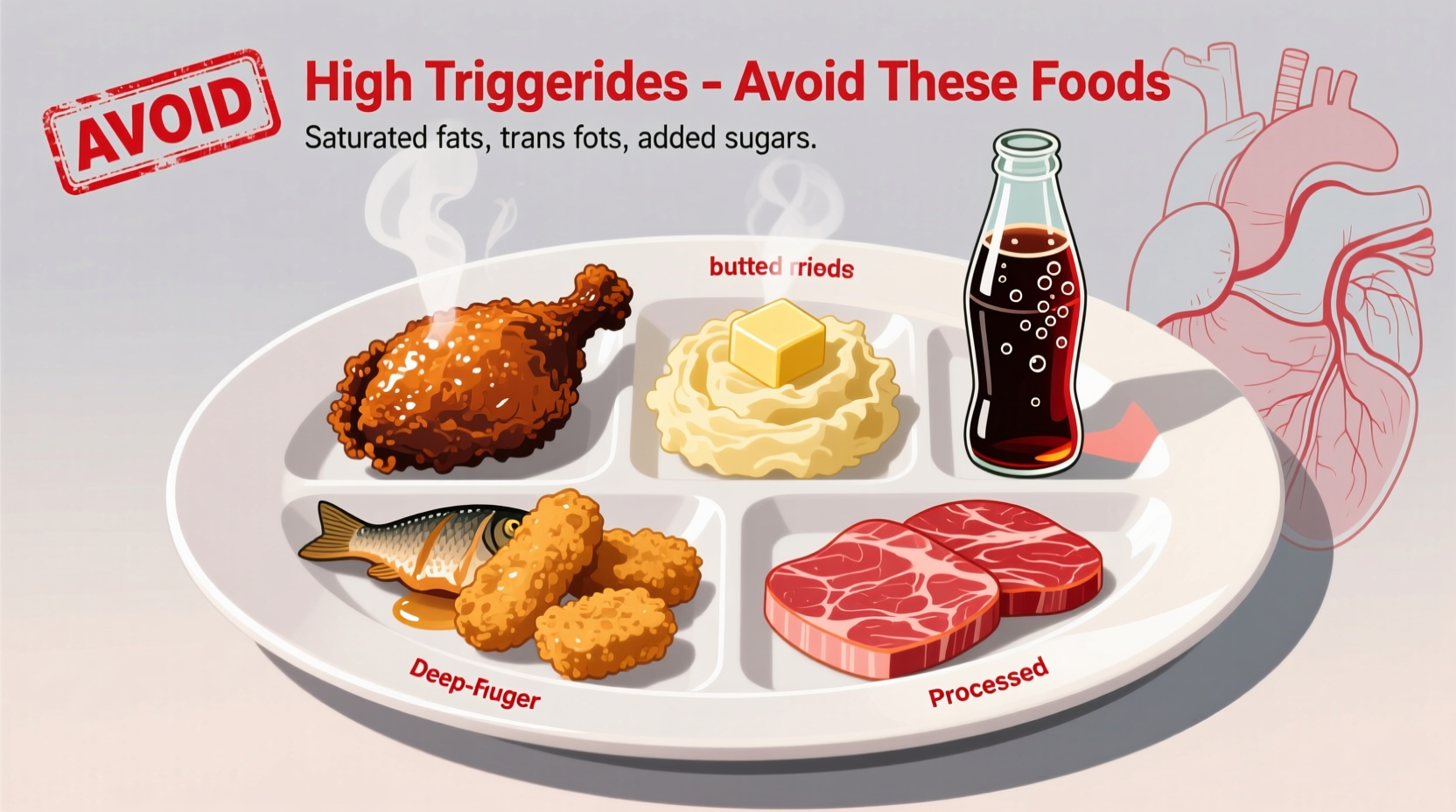Understanding Triglycerides and Your Health
Triglycerides are fat molecules circulating in your bloodstream that serve as your body's energy storage system. While essential in proper amounts, elevated levels (above 150 mg/dL) significantly increase your risk of heart disease, pancreatitis, and metabolic syndrome. The foods you consume directly impact these levels, with certain dietary patterns causing dramatic spikes.
Your Immediate Action Plan
If you've recently received a high triglyceride diagnosis, these three steps deliver the fastest results:
- Eliminate all sugary beverages including fruit juices and soda
- Replace refined grains with whole grain alternatives
- Limited alcohol consumption to no more than one drink per day
According to research published in the American Journal of Clinical Nutrition, implementing these changes can reduce triglyceride levels by 25-30% within just four weeks.
Foods That Elevate Triglycerides: The Science Explained
Sugar and Refined Carbohydrates
When you consume excess sugar or refined carbs, your liver converts the surplus into triglycerides. This process happens rapidly with:
- Sugary beverages (soda, energy drinks, sweetened coffee)
- White bread, pasta, and rice
- Breakfast cereals and pastries
- Candy and desserts
The Centers for Disease Control and Prevention reports that Americans consume an average of 17 teaspoons of added sugar daily—more than triple the recommended limit—which directly contributes to elevated triglycerides.
Fried and Processed Foods
Foods cooked in unhealthy oils contain trans fats and saturated fats that significantly raise triglyceride levels. These include:
- Fried chicken, french fries, and onion rings
- Processed snacks like chips and crackers
- Fast food items
- Many commercially baked goods
| Food Category | Triglyceride Impact | Recommended Limit |
|---|---|---|
| Sugary beverages | +++++ | Zero daily |
| Refined carbohydrates | ++++ | <25% of daily carbs |
| Fried foods | +++ | 1-2x weekly max |
| Alcohol | ++++ | 1 drink/day max |
Alcohol Consumption
Alcohol has a particularly potent effect on triglyceride production. Your liver prioritizes metabolizing alcohol over other processes, which disrupts normal fat metabolism. Even moderate drinking can cause significant triglyceride elevation, especially in people with existing metabolic issues.
The American Heart Association specifically notes that "alcohol is high in calories and sugar, which can raise triglyceride levels" and recommends complete avoidance for those with very high triglycerides (500 mg/dL or above).
Hidden Triglyceride Triggers
Some foods contain less obvious triglyceride-raising ingredients:
- "Low-fat" products with added sugars
- Flavored coffees and creamers
- Store-bought salad dressings
- Instant flavored oatmeal packets
- Many protein bars and shakes

When Food Changes Aren't Enough
Dietary changes typically reduce triglycerides by 20-50%, but some people require additional intervention. Consult your healthcare provider if:
- Your levels remain above 200 mg/dL after 3 months of dietary changes
- You have levels exceeding 500 mg/dL (increased pancreatitis risk)
- You have other risk factors like diabetes or family history
The National Heart, Lung, and Blood Institute emphasizes that "triglyceride management requires both dietary changes and addressing underlying conditions like obesity, diabetes, or thyroid disorders."
Building a Sustainable Low-Triglyceride Diet
Instead of focusing solely on restriction, build a positive food pattern:
- Start meals with non-starchy vegetables
- Choose whole grains like quinoa, barley, and oats
- Include fatty fish (salmon, mackerel) 2-3x weekly
- Use olive oil instead of butter
- Snack on nuts and seeds
Research from the National Institutes of Health shows that the Mediterranean diet pattern reduces triglycerides by an average of 15-20% compared to standard Western diets.
Timeline for Triglyceride Improvement
Understanding the progression of dietary changes helps maintain motivation:
- 1-2 weeks: Reduced sugar intake lowers immediate triglyceride production
- 4-6 weeks: Significant reduction in fasting triglyceride levels
- 3 months: Maximum dietary impact achieved; consider retesting
- 6+ months: Sustained improvements with continued healthy patterns
Individual results vary based on starting levels, genetics, and adherence. Consistency matters more than perfection—reducing problematic foods by 80% delivers substantial benefits.
Context Matters: When Moderation Is Possible
For people with normal triglyceride levels (below 150 mg/dL), occasional indulgences may not cause significant issues. However, if your levels are elevated, even small amounts of trigger foods can cause problems. Consider these context boundaries:
- Normal levels: Occasional treats acceptable with balanced overall diet
- Moderately high (150-199 mg/dL): Strict limitation of trigger foods
- High (200-499 mg/dL): Near elimination of major trigger foods
- Very high (500+ mg/dL): Complete avoidance of sugar, alcohol, and fried foods











 浙公网安备
33010002000092号
浙公网安备
33010002000092号 浙B2-20120091-4
浙B2-20120091-4